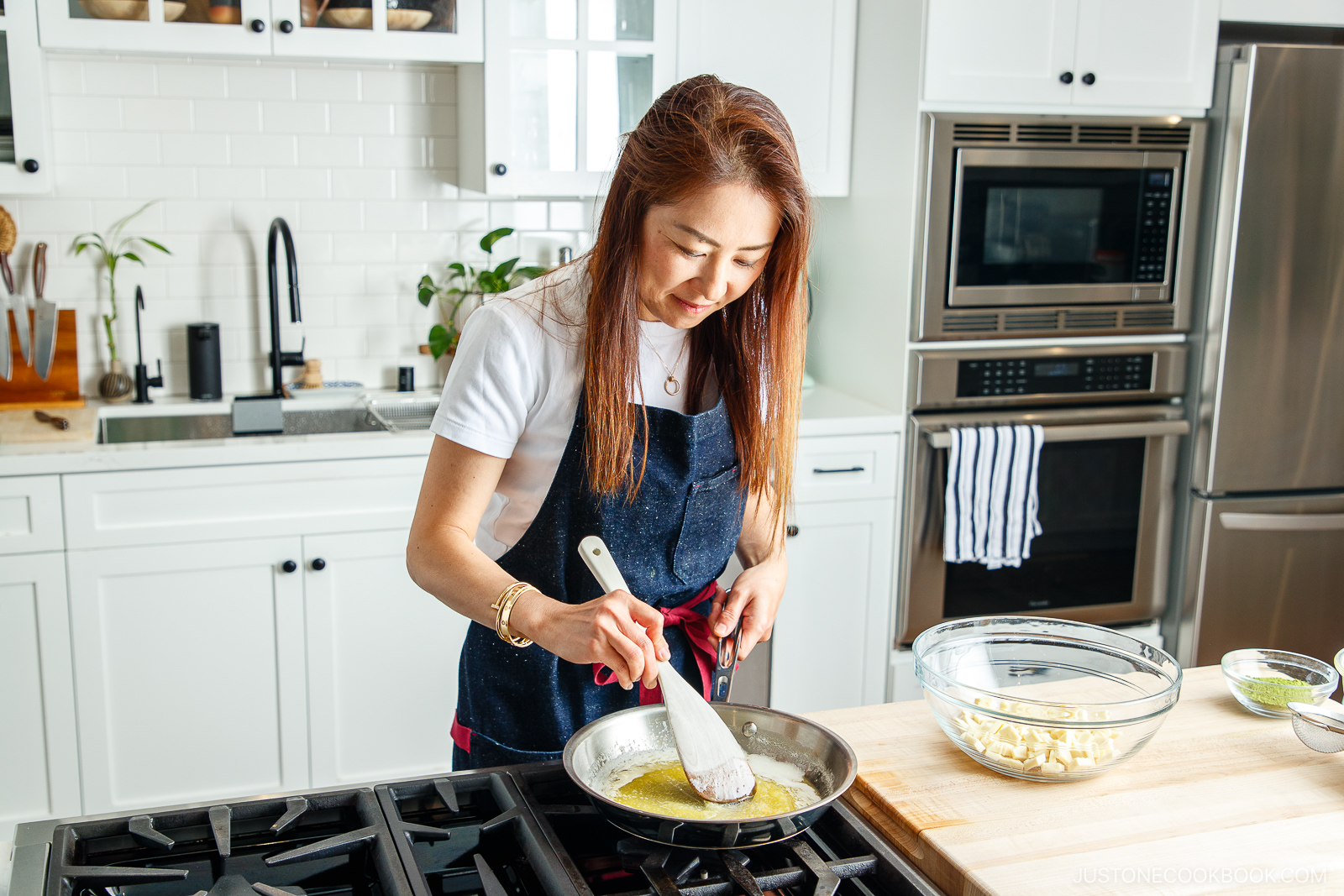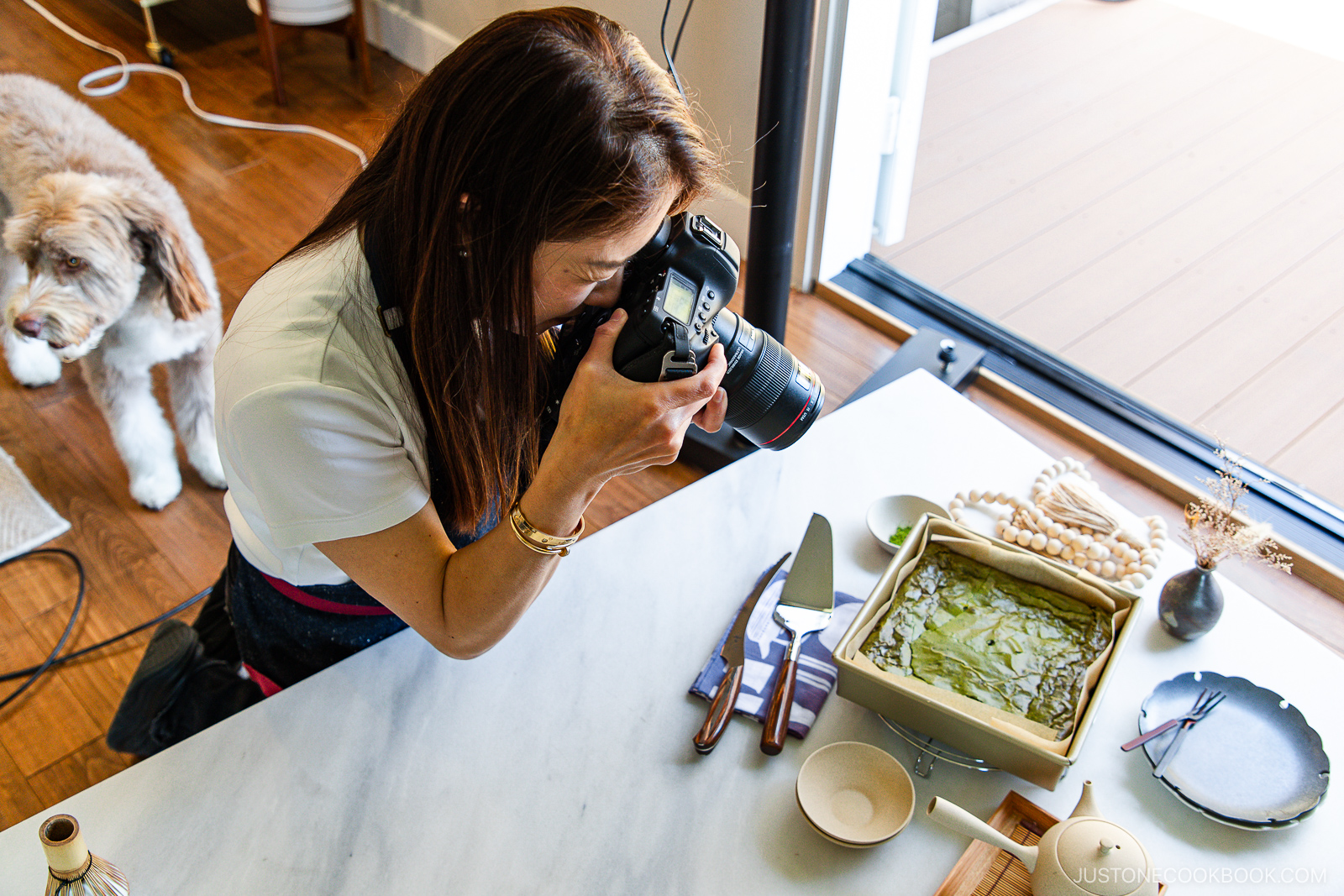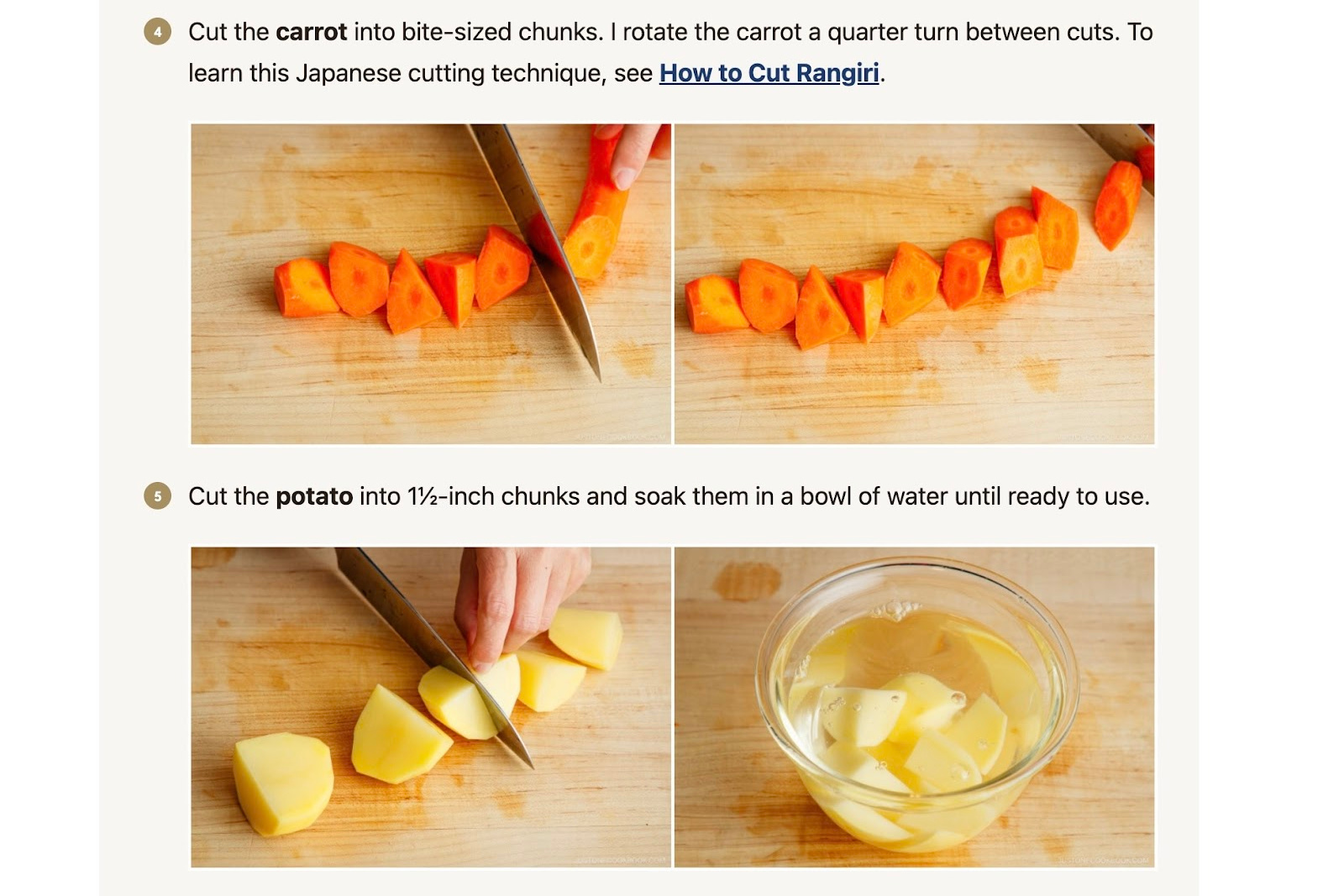Namiko Hirasawa Chen

Founder of Just One Cookbook | Recipe Developer | Food Content Creator
Konnichiwa! I’m Nami, the founder and creator of Just One Cookbook.
I share authentic and approachable Japanese home cooking with readers around the world. My passion is preserving tradition, creating foolproof recipes, and inspiring confidence in the kitchen.
On this page, I’ll share a bit more about my background.
About Me
I was born and raised in Yokohama, Japan, a vibrant port city south of Tokyo with a rich culinary culture shaped by global influences. I moved to the U.S. at age of 20 to attend college, and I’ve been cooking ever since. However, my culinary journey began long before that (more on that later).
Mr. JOC and I married and settled in the San Francisco area. It has been my second home for so long that I’ve now lived in California longer than I did in Yokohama.
I’m a proud mom to a son and daughter and a happy grandma to a mini Aussiedoodle named Miso.



Outside the kitchen, I love to travel, wander through national parks, explore new foods, and discover beautiful tableware and unique kitchen tools. That inspired me to launch JOC Goods—a curated shop offering artisan Japanese tableware and kitchenware that brings beauty, heritage, and joy to everyday cooking.
Curious what my job looks like day to day? Let me take you behind the scenes.
What I Do at Just One Cookbook
I’m a food blogger and entrepreneur who wears many hats. Here’s a glimpse of what I do with a team supporting me:
- Content manager and planner
- Recipe developer
- Food stylist and photographer
- Video creator
- Food writer
- Content creator
- Marketing and social media manager
- Community manager
- Curator for a Japanese artisan tableware & kitchenware online shop, JOC Goods
- Content creator for JOC Japan Travel
- And yes…I’m also the taste-tester and dishwasher for every recipe—multiple times!
My Culinary Journey
I developed my home cooking skills through hands-on experience, daily practice, and my mother’s deep knowledge and passion for Japanese food. Starting at age 12, I spent countless afternoons in the kitchen as my mom’s sous chef. She taught me katei ryori (家庭料理) —Japanese home-style cooking—through repetition, care, and intuition.
When 4:30 p.m. rolled around, she would call me in to help prep dinner. Like most teenagers, I often wished I could be doing something else. I didn’t realize how much I was absorbing at the time. When I moved to the U.S., I was amazed by how easily I could recreate her dishes from memory.
After starting my own family, cooking became my way of staying connected to my roots. In 2011, I launched Just One Cookbook with the simple goal to preserve and share my family’s Japanese recipes. Today, I’m deeply grateful that it’s grown into a go-to resource where people around the world come together to discover, cook, and enjoy authentic Japanese food at home.

Just One Cookbook Today
Thanks to your incredible support, Just One Cookbook is now the largest English-language Japanese recipe site with over 3 million monthly visitors. Over the years, we’ve been featured in The New York Times, Forbes, The Washington Post, The Japan Times, The New Yorker, and more.
In 2017, we were finalists in the SAVEUR Blog Awards for Best Food Video. And in May 2025, our YouTube channel reached 1 million subscribers!
Thank you for being here. Your support and love for Japanese cooking continue to inspire me. I can’t wait to share more recipes, stories, and meaningful moments with you.
There’s another side of my story that many people don’t know—one that has quietly shaped the way I create and share recipes every day…

💛 My Lifelong Learning Differences
For nearly 30 years, I quietly struggled to read, write, and find the right words. I often needed extra time to process language, organize my thoughts, and respond—even when I understood the ideas. I never knew why I struggled to express myself, understand what I read, retell stories, and remember what I just read or heard.
When I first came to the US for college, I pushed through long nights with sheer determination, thinking I just had to work harder. Since English is my second language, I assume my difficulties were just part of that journey. I did well academically, which made it even harder to understand my struggles.
I always sensed something was different, so I shared my challenges openly. But even my family and closest friends didn’t notice or “see” anything unusual. That made it hard to explain what I was going through, year after year.
Everything changed when I read that dyslexia can show up differently in other languages. I learned that it often goes undetected in languages like Japanese that rely on visual characters. This was a lightbulb moment in the mystery I had been living with for almost three decades.
Turning Dyslexia into Purpose
I needed to end that mystery. So, at age 48, I reached out to a psychologist for testing and evaluation.
That’s when I was finally diagnosed with dyslexia (July 2025) along with weak working memory and expressive and receptive language disorders. It turns out that I had been living with a learning disorder my whole life—without knowing it.
When I shared my diagnosis, some people asked why I decided to talk about it publicly.
It took me nearly three decades to understand why I struggled, and it was a lonely experience. I worked hard to keep up, but I was often emotionally and mentally exhausted. Even when I succeeded, I still felt like no one truly understood what I was going through.
That’s why I want my story to help others recognize the signs early and help them feel less alone. In a way, I’m helping my younger self, the 20-year-old who had just moved to a new country, trying to figure everything out by herself.
My daily challenges continue, but now that I understand what’s happening, I’m learning to be kinder to myself and to move forward with peace and purpose.
If my story resonates, please share it with someone who might find it helpful.💛
How Dyslexia Shaped My Recipes
It’s clear to me now that dyslexia has shaped the way I’ve built Just One Cookbook.
Long before I knew about my learning differences, I naturally relied on visuals—step-by-step photos, clean layouts, and videos—to organize my thoughts and explain things clearly.
I’m even more intentional about making my writing easy to scan and reader-friendly, not just for people with dyslexia, but for everyone.
What began as a way to help myself understand and remember each process turned out to be the same approach that helps others learn, too.

Whether you’re new to cooking, a visual learner, or facing your own challenges, I want you to know:
You’re in good company, and you’re always welcome here.
If you ever need help, don’t hesitate to reach out. My team and I are always here for you!

